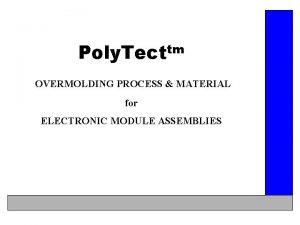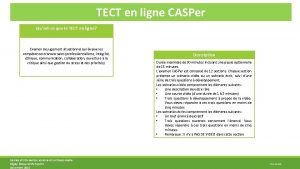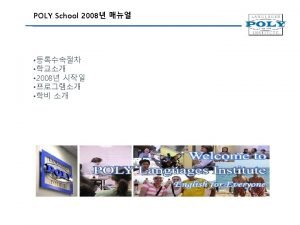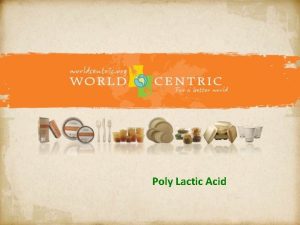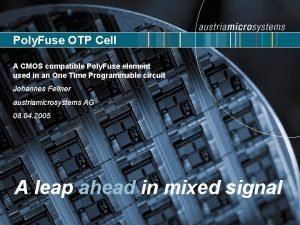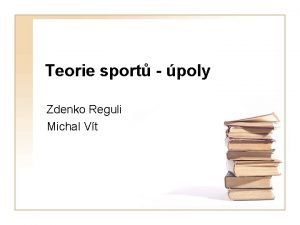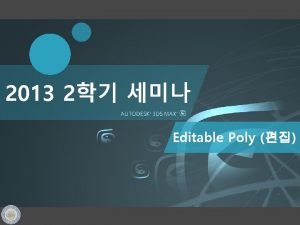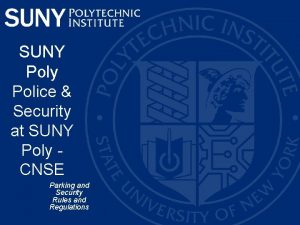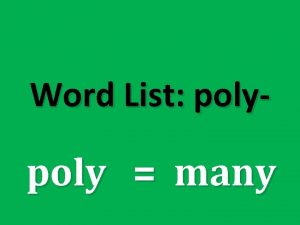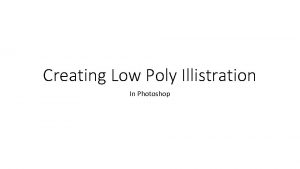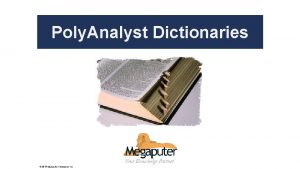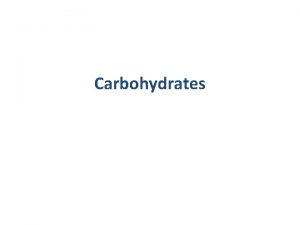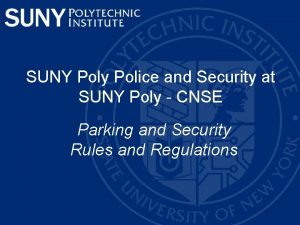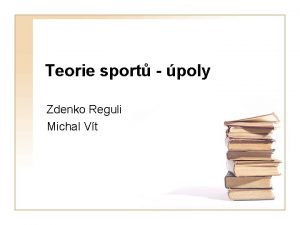tm Poly Tect OVERMOLDING PROCESS MATERIAL for ELECTRONIC


















- Slides: 18

tm Poly. Tect OVERMOLDING PROCESS & MATERIAL for ELECTRONIC MODULE ASSEMBLIES

ELECTRONIC MODULE Overview Electronic modules are encapsulated for various reasons, e. g. , protection of delicate components due to environmental conditions including dust, dirt, and moisture, protection in thermally unstable environments, and to protect technologies and designs. Applications: Hand held equipment, industrial controls, retail security, automotive components, electronic sensors (motion, photonic, etc. . )

ELECTRONIC MODULE COMPOSITION Electronic Modules may consist of: • Populated Printed Circuit Boards • Custom Components • Input/Output Connectors • RF Transmission Capability • Mounting Hardware

CONVENTIONAL ENCAPSULATION Option 1: Injection mold housing and insert PCB into housing. Then fill housing cavity with a potting compound and bake unit. Total assembly time up to 3 hours.

CONVENTIONAL ENCAPSULATION Option 2: Cast or formed housing and insert PCB into housing. Place seal or gasket around parameter. Affix cover plate with fasteners. Total assembly time 2 -3 minutes.

INJECTION MOLDING ENCAPSULATION Process: Typical injection molding cavity pressures range between 1200 psi and 2400 psi Problem: Shear stress of common solder (63%sn, 37%pb) for mounting components to PCB’s is @ 500 psi Result: Component solder failure would occur during injection molding due to shearing of solder joints

INJECTION MOLDING ENCAPSULATION Process: Typical injection molding material temperatures range between 218 C (425 F) and 382 C (720 F) Problem: Melting point of common solder is 183 C (361 F) Result: Component solder failure would occur during injection molding due to melting of solder joints

PCB ENCAPSULATION PARAMETERS Poly. Tect molding pressures less than 500 psi Poly. Tect molding temperatures less than 180 C

ADVANTAGES OF THE Poly. Tect PROCESS • Low molding pressures of 100 psi • Low material temperatures of 100 F • Low mold temperatures of 140 F • Use of solid or foam materials

Poly. Tect OVERMOLDING PROCESS 1. The populated PCB’s and any associated hardware components are placed into the mold base Conventional multi-cavity mold

Poly. Tect OVERMOLDING PROCESS 2. The molding cycle takes between 30 and 120 seconds and monitors material temperature, pressure, velocity and shot size Molding press closed during polymer injection

Poly. Tect OVERMOLDING PROCESS The Poly. Tect process can be a single or multi-mold depending on the part size Molds can be single or multi-cavity Multi-cavity molds can be located in a single press, carousel-rotating press or a self-contained press

Poly. Tect OVERMOLDING PROCESS 3. Completed parts are removed and inspected

Poly. Tect OVERMOLDING PROCESS The Poly. Tect process allows parts to be molded clear then opaque sequentially providing for preprogrammed QC inspection. Parts can be molded with or without color providing part security and/or identification.

Poly. Tect MATERIAL PROPERTIES Mechanical and thermal properties are custom tailored for each application. Materials used are proprietary multi-component polyurethane systems. Tensile strengths range between 2500 psi and 9000 psi Elongation values range between 20% and 300% Operating temperatures range between – 40 C and +85 C Very low absorption rates

Poly. Tect MATERIALS Have the ability to be custom blended to provide: • Foam (Low density and rigid) • Solid (high density and rigid or very flexible) • Soft or Hard (shore A 55 to shore D 95) • Fast or slow reactivity (1 second gel to 45+ seconds)

Poly. Tect OVERMOLDING PROCESS & MATERIAL SUMMARY Developed to address the market need for an efficient way to encapsulate electronic modules. Modules consist of fully populated printed circuit boards Eliminates the need to mold polymer housings used in conjunction with standard sealing methods with a one step molding process.

Poly. Tect OVERMOLDING PROCESS & MATERIAL SUMMARY Made of specialty-formulated materials to mold at temperatures and pressures below the shear stress of solder joints. Allows for over molding of delicate components without degradation of performance Cost Reduction of traditional manufacturing and assembly methods
 Pcb overmolding process
Pcb overmolding process Scrip exchange
Scrip exchange Electronic field production examples
Electronic field production examples Geometric symbols in engineering drawing
Geometric symbols in engineering drawing Material usage variance formula
Material usage variance formula Examples of popular culture
Examples of popular culture Whats cultural lag
Whats cultural lag All groups create norms to enforce their cultural values.
All groups create norms to enforce their cultural values. Materials at home that are useful and harmful
Materials at home that are useful and harmful Kontinuitetshantering i praktiken
Kontinuitetshantering i praktiken Typiska drag för en novell
Typiska drag för en novell Nationell inriktning för artificiell intelligens
Nationell inriktning för artificiell intelligens Returpilarna
Returpilarna Shingelfrisyren
Shingelfrisyren En lathund för arbete med kontinuitetshantering
En lathund för arbete med kontinuitetshantering Särskild löneskatt för pensionskostnader
Särskild löneskatt för pensionskostnader Tidbok
Tidbok Anatomi organ reproduksi
Anatomi organ reproduksi Förklara densitet för barn
Förklara densitet för barn
